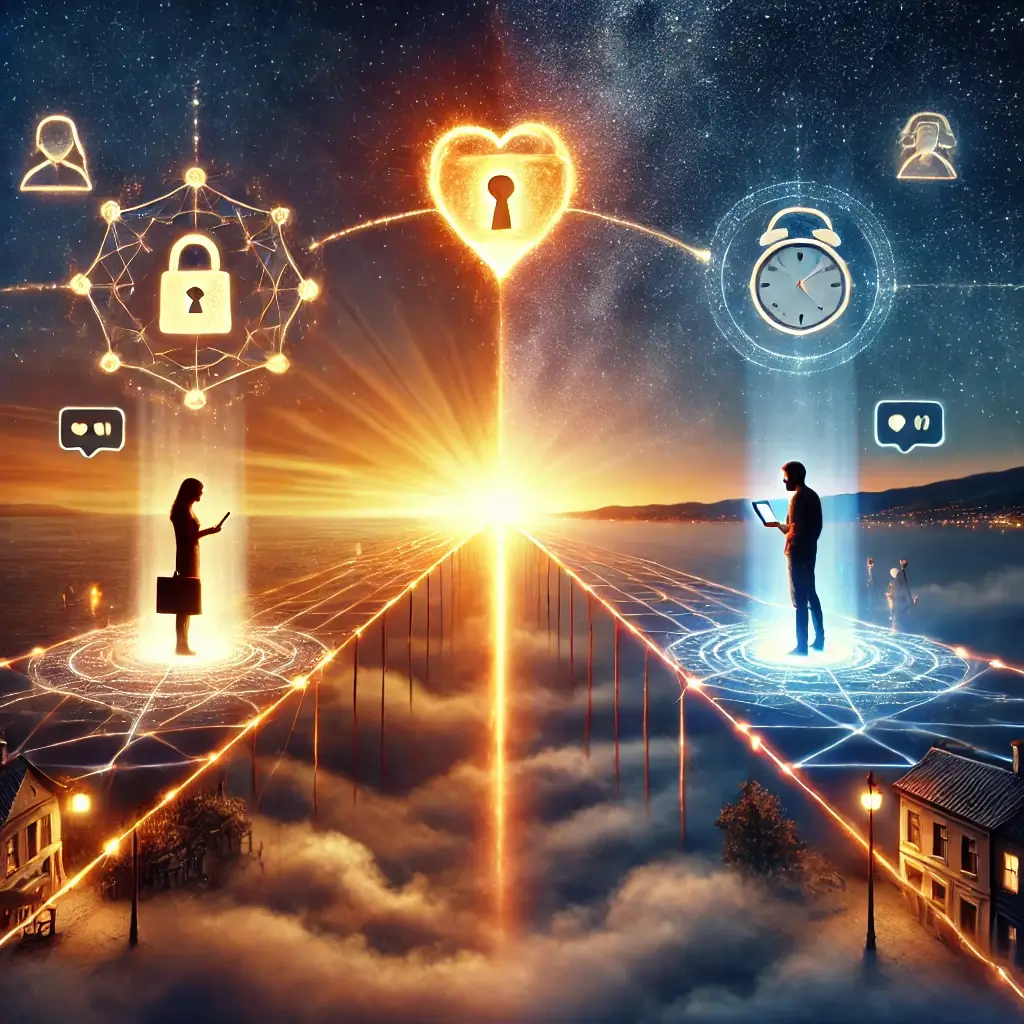The Dual Nature of Long-Distance Love
Navigating a long-distance relationship (LDR) is both a challenge and an opportunity. While the physical distance may seem like a barrier, it often allows couples to focus on emotional and psychological connection, fostering personal growth and deeper intimacy. With millions of people embracing LDRs globally, it’s clear that love can transcend physical boundaries. However, success in these relationships requires a blend of psychological resilience, trust, and the effective use of technology. This article explores how psychological principles and modern tools come together to strengthen long-distance bonds, offering a fresh perspective on this growing relationship dynamic.
Digital Tools for Maintaining Emotional Connections
Technology has become an indispensable ally for long-distance couples. Video calling platforms like Zoom and FaceTime enable partners to engage in face-to-face communication despite being separated by miles. According to Pew Research Center, over 60% of couples in LDRs rely on these tools for emotional connection (Pew Research Center, 2022).
Creating Intimate Digital Spaces
Beyond video calls, specialized apps such as Between and Couple allow partners to share intimate messages, photos, and schedules. These platforms foster a private digital space that mirrors the intimacy of physical proximity. Moreover, co-viewing experiences on services like Teleparty (formerly Netflix Party) or gaming apps enable couples to spend meaningful quality time together, even when apart.
The Psychological Benefits of Virtual Presence
Interestingly, the psychological impact of these technologies is significant. A study by the Journal of Communication Technology highlights that such tools help reduce feelings of loneliness and increase relationship satisfaction by maintaining a sense of “virtual presence” (Journal of Communication Technology, 2021). Furthermore, wearable devices like smartwatches can also bridge emotional gaps, allowing partners to share real-time experiences such as fitness goals or heart rate data, fostering a sense of shared routine and closeness.
The Foundation of Long-Distance Success
While technology facilitates connection, trust remains the foundation of every successful LDR. Research from the Journal of Sex and Marital Therapy underscores that trust is built through consistent communication, emotional transparency, and mutual goal-setting (Journal of Sex and Marital Therapy, 2018). Without trust, even the most advanced technology cannot bridge emotional gaps.
Overcoming Psychological Barriers in Distance
Psychologically, trust-building in LDRs often involves overcoming fears and insecurities. Partners need to:
Creating a Space for Vulnerability
Establish Emotional Safety: Sharing vulnerabilities fosters closeness and reduces misunderstandings. According to Queen’s University, LDR couples often engage in deeper conversations compared to geographically close pairs, enhancing emotional intimacy (Queen’s University, 2020).
Building Relationship Stability Through Routine
Reinforce Consistency: Predictable check-ins and routines signal reliability, creating a psychological sense of stability.
Aligning Future Visions Despite Distance
Manage Expectations: Setting clear boundaries and discussing relationship goals can align both partners’ visions for the future.
Addressing Emotional Challenges Head-On
Jealousy and uncertainty—common challenges in LDRs—can be mitigated by addressing them openly. The American Psychological Association emphasizes that active listening and validation of each other’s feelings play a crucial role in reducing emotional tension (American Psychological Association, 2019).
Creating Milestones for Relationship Growth
Trust-building strategies also benefit from setting achievable milestones. For instance, planning visits or special events creates anticipation and shared joy, strengthening the relationship bond over time. This intentionality not only builds trust but also nurtures long-term relationship satisfaction.
Developing Emotional Strength in Separation
Maintaining a long-distance relationship requires emotional resilience. This includes the ability to cope with uncertainty, adapt to challenges, and remain optimistic about the future. Psychologists suggest that practicing mindfulness and gratitude can significantly enhance relationship satisfaction. Gratitude, for instance, encourages partners to focus on positive aspects of their relationship, counteracting the emotional strain of distance.
Balancing Independence with Connection
Emotional resilience also involves fostering independence. Engaging in individual hobbies and personal growth not only enriches the lives of both partners but also prevents the relationship from becoming overly dependent on digital interactions. According to the Journal of Emotional Psychology, couples who maintain a balance between individuality and togetherness report higher satisfaction in long-distance relationships (Journal of Emotional Psychology, 2020).
The Symbiosis of Technology and Psychology in Modern Love
Long-distance relationships thrive at the intersection of psychology and technology. By leveraging digital tools to maintain connection and applying psychological principles to build trust and resilience, couples can navigate the unique challenges of LDRs successfully. Far from being a hindrance, the distance can serve as a catalyst for deeper understanding and emotional growth. Through deliberate effort, emotional resilience, and consistent trust-building practices, long-distance relationships can evolve into some of the most fulfilling and enduring partnerships. By focusing on these critical aspects, couples can turn the challenge of physical separation into an opportunity for profound connection.
Academic Foundations
References
Pew Research Center. (2022). “How Technology Shapes Relationships.” Retrieved from pewresearch.org
Journal of Sex and Marital Therapy. (2018). “Trust Dynamics in Long-Distance Relationships.”
Queen’s University. (2020). “Study on Communication Depth in Long-Distance Couples.”
Journal of Communication Technology. (2021). “Enhancing Emotional Intimacy Through Digital Tools.”
American Psychological Association. (2019). “Navigating Emotional Challenges in Long-Distance Relationships.”
Journal of Emotional Psychology. (2020). “Balancing Individuality and Togetherness in Relationships.”
